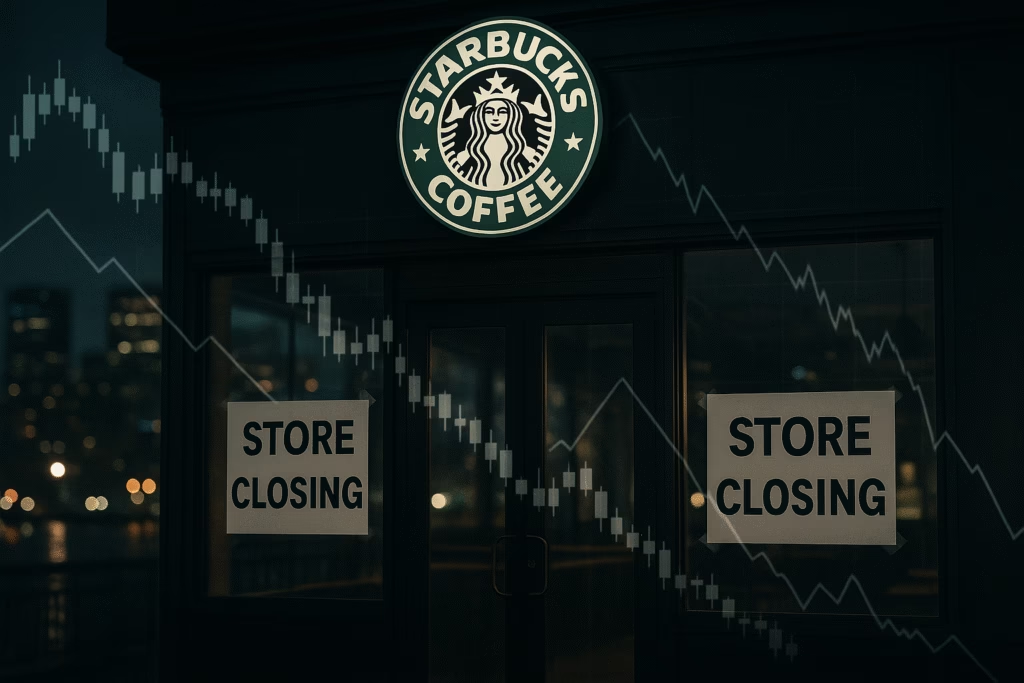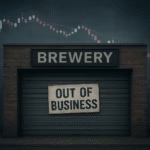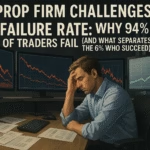Even giants must adapt. Starbucks has recently announced sweeping closures, layoffs, and restructuring steps—moves that reflect deeper shifts in consumer demand and cost pressures. These changes are not just a corporate reset, but also a real-world metaphor for market cycles, retracements, and structural corrections.
As traders, when a powerhouse like Starbucks cuts back, it’s a reminder: no business is immune from downturns. And in the markets, such cycles demand strategies built for resilience, not just momentum.
What’s Happening: Starbucks Store Closures & Layoffs
Recently, Starbucks disclosed a $1 billion restructuring plan that includes closing underperforming stores, cutting approximately 900 non-retail roles, and optimizing its retail footprint.
Some key updates:
- Starbucks will end the fiscal year with ~18,300 North American locations, down from 18,734, after closing some and opening others.
- The company identified coffeehouses where it “doesn’t see a path to financial performance,” and those will be shuttered.
- The closures affect Starbucks Reserve locations too—most notably, the Seattle Reserve Roastery was closed permanently in 2025.
- Bay Area locations are part of the cut list—more than 40 stores in the region are slated to close.
- In San Antonio, at least two Starbucks stores are confirmed closed as part of the broader strategy.
These moves signal a pivot from sheer scale toward quality, performance, and cost discipline.
Business Contraction (StarBucks Closures) as a Metaphor for Market Cycles
Starbucks’ contraction mirrors broader patterns seen in markets:
- Expansion Peaks & Contraction Zones
Just as Starbucks scaled aggressively in past years, markets often expand until valuation or cost pressures force retrenchment. - Overextension Risk
Starbucks’ underperforming locations, unprofitable leases, or impossible customer experience expectations all became liabilities. In trading, positions held too long or in overvalued assets can become liabilities when cycles turn. - Selective Pruning & Focus on Core Strengths
Starbucks is culling weaker stores and investing in its stronger outlets. Similarly, in portfolio management, we must trim underperforming positions and focus on core strengths. - Lagging Indicators & Warning Signs
Before closures, Starbucks likely saw declines in foot traffic, margins, or revenue at marginal stores. In markets, volume divergence, weakening momentum, or leadership breakdowns often precede trend reversals. - Swift and Brutal Realignments
Business collapses often happen fast—leases are exited, staff reassigned. Market corrections, too, can accelerate once sentiment shifts.
Start TradingView Signal Automation For Free
What Traders Should Learn From Starbucks Closure & Apply
Risk Control Is Non-Negotiable
Starbucks is confronting its weakest assets head-on. Traders must always bake in stop-loss limits, maximum drawdowns, and position sizing so one bad trend doesn’t destroy capital.
Avoid Structural Leverage
Starbucks’ cost pressures (leases, staffing, logistics) magnified risk. In trading, using too much leverage or holding overly concentrated bets can magnify losses when the cycle turns.
Be Ready to Rotate / Prune
Just as Starbucks is culling poor-performing stores, traders should be ready to cut weak positions and reallocate to stronger setups or themes.
Use Automation to Enforce Discipline
When cycles shift, emotional reaction and hesitation kill performance. Automation tools—like placing automatic exits and scaling rules—help keep discipline even in stress.
How PickMyTrade Automation Comes into Play
In times like these—when macro and micro cycles are shifting—PickMyTrade offers efficiencies that align with lessons from business contraction:
- Predefined rules for exits & scaling that get triggered before emotional decisions override logic.
- Instant execution when your signal is hit, protecting from sharp reversals.
- Backtesting across cycle phases, so your strategy is stress-tested not just in bull trends but during contraction phases.
- Risk-first architecture where stop-loss, max daily loss, trailing stops are inherent.
When markets turn, it’s not about predicting the collapse—it’s about preparing for it. Automation is your buffer against panic and poor decisions.
Conclusion
Starbucks’ latest closures, layoffs, and restructuring are more than corporate changes—they’re a microcosm of market dynamics. Growth, overreach, contraction, and reemergence—these cycles play out in businesses and in markets alike.
For traders, the lesson is clear: survive the contraction phases before expecting the next bullish leg. Use disciplined risk management, prune when needed, and let automation (like PickMyTrade) enforce your rules when volatility hits.
Also Checkout: Automate TradingView Indicators with Tradovate Using PickMyTrade




